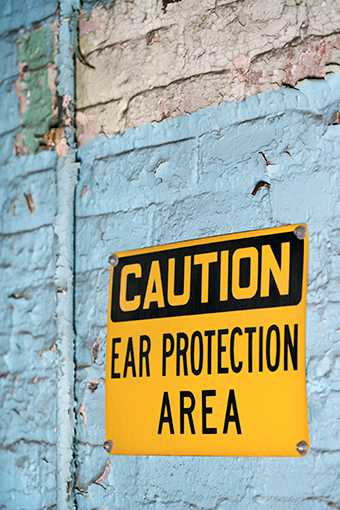Program Description
Occupational hearing loss affects millions of workers in a wide range of industrial sectors such as manufacturing, services, construction, mining and others. More than 22 million workers are at risk of hearing loss from workplace exposure to hazardous noise.¹ Noise exposures above an A-weighted 85 dB time-weighted average present a significant risk for noise-induced hearing loss.² An estimated 9 million workers are exposed to hazardous ototoxic agents during their workday.³

The NIOSH Hearing Loss Prevention Program mission is to provide national and world leadership to reduce the prevalence of occupational hearing loss through a focused program of research and prevention. NIOSH recommends removing hazardous noise from the workplace whenever possible and using hearing protectors in those situations where dangerous noise exposures have not yet been controlled or eliminated. The program has adopted the following vision: In 10 years every occupational noise exposed worker in the US will be touched by NIOSH knowledge and technology.
NIOSH works with stakeholders in other government agencies, industry, labor and academia to help set research priorities. During the past several years, hearing loss research has been focused on solving problems in the manufacturing, mining, and construction sectors. However, given the cross-sector nature of occupational hearing loss, “lessons learned” from the planned research are likely to apply to occupational hearing loss issues within other work sectors.
NIOSH Hearing Loss Prevention Program strives to fulfill its mission through:
High Quality Research: Reduce occupational hearing loss through dissemination of research results in significant high-impact journals and through the publication of prevention solutions that have demonstrated effectiveness.
Practical Solutions: Develop practical and cost effective solutions for the complex causes of occupational hearing loss that are readily implemented by industry.
Partnerships: Foster partnerships with labor, industry, government and other stakeholders to conduct collaborative research to develop solutions for hearing loss prevention.
Research to Practice (r2p): Formulate solutions to hearing loss prevention that can translate and transfer research findings to partners for adoption within the workplace.
Reference
1 Tak S, Davis RR, Calvert G, [2009] Exposure to hazardous workplace noise and use of hearing protection devices among US workers — NHANES, 1999-2004, American Journal of Industrial Medicine. 52(5), 358-371.
2 Prince MM, Staynor LT, Smith RJ, Gilbert SJ [1997]. A re-examination of risk estimates from the NIOSH Occupational Noise and Hearing Survey (ONHS), J. Acoust. Soc. Am. 101(2), 950-963.
3 Morata TC, [2007]. Promoting hearing health and the combined risk of noise-induced hearing loss and ototoxicity. Audiol Med 2007;5:33–40
- Page last reviewed: December 17, 2012
- Page last updated: May 24, 2017
- Content source:
- National Institute for Occupational Safety and Health Office of the Director


 ShareCompartir
ShareCompartir